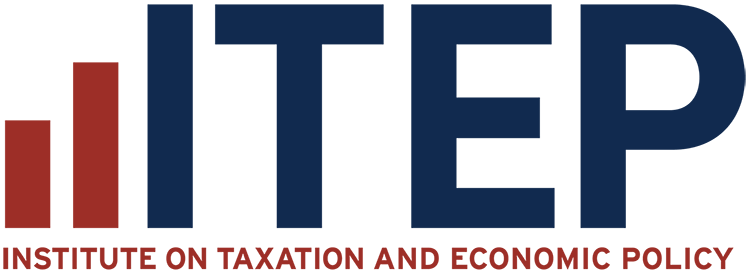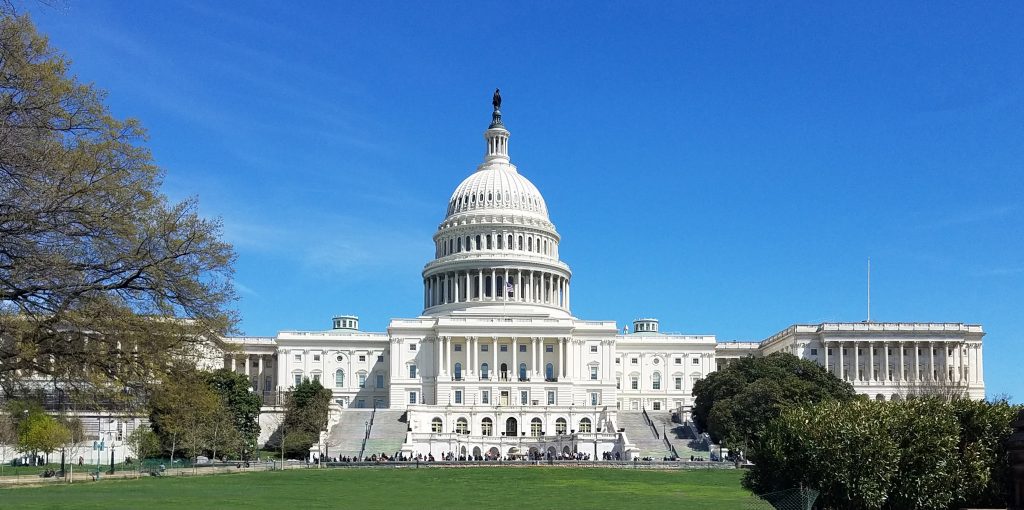
ITEP's Research Priorities
- 2025 tax debate
- Blog
- Cannabis Taxes
- Corporate Taxes
- Corporate Taxes
- Earned Income Tax Credit
- Education Tax Breaks
- Estate Tax
- Federal Policy
- Fines and Fees
- Immigration
- Income Taxes
- Inequality and the Economy
- ITEP Work in Action
- Local Income Taxes
- Local Policy
- Local Property Taxes
- Local Refundable Tax Credits
- Local Sales Taxes
- Maps
- News Releases
- Personal Income Taxes
- Property Taxes
- Property Taxes
- Publications
- Refundable Tax Credits
- Sales, Gas and Excise Taxes
- Sales, Gas and Excise Taxes
- SALT Deduction
- Select Media Mentions
- Social Media
- Staff
- Staff Quotes
- State Corporate Taxes
- State Policy
- State Reports
- States
- Tax Analyses
- Tax Basics
- Tax Credits for Workers and Families
- Tax Credits for Workers and Families
- Tax Reform Options and Challenges
- Taxing Wealth and Income from Wealth
- Trump Tax Policies
- Who Pays?
The Governor’s Proposed Personal Income Tax Cut: Who Wins and Who Loses?
November 15, 2018
Governor Asa Hutchinson proposed a personal income tax cut as part of his balanced budget plan for the 2019 legislative session, released on November 14.
Oregon Center for Public Policy: Oregon Can Raise $376 Million by Clamping Down on Offshore Corporate Tax Avoidance
November 15, 2018
Oregon can clamp down on multinational corporations shifting profits overseas, create a more level playing field for Oregon businesses, and raise millions in revenue by enacting “complete reporting” by large corporations. That law would make it difficult for multinational corporations to avoid Oregon corporate income taxes by artificially shifting profits earned in Oregon to subsidiaries located abroad.
Louisiana Budget Project: Tax Code Is Holding Louisiana Back
November 15, 2018
Years of efforts to reform Louisiana’s regressive and overly complicated tax code have run aground in the state Legislature. The result: Louisianans pay the second-highest sales taxes in the nation, while the tax code is riddled with costly exemptions and deductions. The state’s broken tax structure is a major reason why the state lurched from budget crisis to budget crisis over the last decade and has struggled to fund critical programs and services like higher education and health care. The Advocate’s editorial board shares its thoughts on the latest report from the Institute on Taxation and Economic Policy.
New 50-State Analysis: SALT Cap Repeal Would Be Costly, Mostly Benefit Top 1%
November 14, 2018 • By ITEP Staff
Repealing the 2017 tax law’s cap on state and local tax (SALT) deductions without replacing it with a different type of limit would pile one bad policy on top of the other, annually add $88 billion to the deficit-financed tax law, and mostly benefit the wealthy, a new 50-state analysis released today by the Institute on Taxation and Economic Policy reveals.

The cap on federal tax deductions for state and local taxes (SALT) that is in effect now under the Tax Cuts and Jobs Act (TCJA) is a flawed provision but repealing it outright would be costly and provide a windfall to the rich. Congress should consider replacing the SALT cap with a different type of limit on deductions that would avoid both of these outcomes. Using the ITEP microsimulation tax model, this report provides revenue estimates and distributional estimates for several such options, assuming they would be in effect in 2019.

Today Amazon announced major expansions in New York and Virginia, where it intends to hire up to 50,000 full-time employees. The announcement marks the culmination of a highly publicized search that lasted more than a year and involved aggressive courting of the company by cities across the nation. The following are three tax-related observations on the announcement.
15 Companies Report an Average 10.4 Percentage Point Drop in Effective Tax Rates Since 2017
November 13, 2018 • By ITEP Staff

Comparing the year’s first three quarterly filings of 2018 with those of 2017, we find that 15 of the largest Fortune 500 companies reported worldwide effective income tax rates declining by an average of 10.4 percentage points and by as much as 16 percentage points. In total these companies owed $22.3 billion less in taxes than they would have under their 2017 effective rates, saving an average of $1.5 billion each.
Tax Proposals Target Benefits to Those at the Top, Corporations
November 12, 2018
The Arkansas Legislative Tax Reform and Relief Task Force’s recommendations would make the state’s tax system even more regressive than it already is. According to a new analysis by Arkansas Advocates for Children and Families and the Institute on Tax and Economic Policy, the net overall impact of the combined recommendations would actually raise taxes on the neediest Arkansans. At the same time, it would target a bigger share of the decrease to those with the highest incomes.
Louisiana Budget Project: Race Equity and Taxes in Louisiana
November 9, 2018
Louisiana’s upside-down tax structure means the highest income-earners pay less than the poorest families, when measured as a percentage of income. The Institute on Taxation and Economic Policy’s “Who Pays” report lays this out in careful detail, and the latest edition breaks down the tax distribution by race. The conclusion: Black households pay a higher percentage of their income in state and local taxes than white households. Louisiana has work to do to make the tax structure fairer and reduce racial inequalities.
Louisiana Budget Project: Louisiana’s Regressive Tax Structure
November 5, 2018
Poor and middle-income families in Louisiana pay state and local taxes at a higher rate than the wealthiest families. That’s the key takeaway from the latest state-by-state breakdown of tax distribution by income groups from the Institute on Taxation and Economic Policy (ITEP). Louisiana’s tax structure is the 14th most regressive in the nation.
Comments to be delivered during IRS hearing on “Contributions in Exchange for State or Local Tax Credits” (REG-112176-18)
November 5, 2018 • By Carl Davis
ITEP views this proposal as a sensible improvement, and one that is actually overdue, to the way the charitable deduction is administered. At the end of my remarks I will discuss a few ways that the regulation could be improved. But the core point I want to emphasize is that the general approach taken here, where quid pro quo rules are applied in a broad-based fashion to all significant state and local tax credits, is the correct one.
Idaho Press: Economic Study Finds That Poor Idahoans Pay More State and Local Taxes Than Rich Ones
November 3, 2018
The biggest drivers of the inequality in Idaho are the sales and property taxes. In every bracket of income measured by the Institute’s report, the amount that families paid in state and excise taxes went down as their total income increased. The lowest-earning 20 percent spent twice as much of their annual income on property taxes as the highest 20 percent, with an average of 3.3 percent paid on their property compared to 1.6 percent.
The New Orleans Advocate: James Gill: Louisiana’s Tax System Isn’t the Most Unfair in the Nation, But It’s not for Lack of Trying
November 3, 2018
According to a study just released by the Institute on Taxation and Economic Policy in Washington, Washington State sets the regressive standard, while we rank 14th. If your income is $17,100 or less in Louisiana, you'll pay 11.9 percent of it in taxes. That number shrinks the further you go up on the income scale and is roughly halved by the time you reach fat-cat territory. Sales and excise taxes take 9.2 percent from the poorest, and 1.2 percent from the richest.
The New Yorker: If Jeff Bezos Makes Washington the Second Headquarters of Amazon
November 3, 2018
Earlier this year, Seattle’s city council passed a tax on large corporations aimed at raising an estimated forty-seven million dollars a year for affordable-housing initiatives. But after about a month the city council repealed the tax—in response to a ballot challenge funded in part by Amazon, which threatened to leave Seattle if the tax was implemented. Matthew Gardner, a tax-policy analyst at the Institute on Taxation and Economic Policy, told the Washington Post, “Nobody on Seattle’s city council wants to be the one who chased Amazon out of town.”
Kansas Center for Economic Growth: Kansans of Color Often Pay More Than Their Fair Share of Taxes
November 2, 2018
Kansans believe in fairness. However, a recent study by the Institute on Taxation and Economic Policy (ITEP) and the Kansas Center for Economic Growth finds that the lowest-income Kansans are contributing a higher share of their income to fund our priorities. Without an equitable tax structure, we will struggle to make necessary investments in great […]
New Mexico Voices for Children: The Next Governor Should Improve Our Tax System and Increase Wages
November 2, 2018
When it comes to fairness, New Mexico’s tax system is backwards. Those who earn the smallest incomes pay the highest rates in state and local taxes, according to a new report from the Institute on Taxation and Economic Policy. The responsibility for taxes should not fall hardest on those with the least ability to pay, but it does. There are several ways we can make our tax system fairer.
Oregon Center for Public Policy: It’s Time to Fix Oregon’s Regressive Tax Structure
November 2, 2018
Oregon’s poorest families pay more in taxes as a share of income than any group of taxpayers in the state, while the richest Oregonians pay the smallest share of any group. That is the conclusion of a new report by the Washington, D.C.-based Institute on Taxation and Economic Policy (ITEP).
Cherokee Tribune & Ledger-News: Financial Watchdog: Pritzker’s Spending Promises Would Raise Taxes on Middle Class
November 1, 2018
The Institute on Taxation and Economic Policy says Illinois has one of the most regressive taxes in the nation, largely due to its flat income tax. In its annual “Who pays?” report, the institute said the poorest 20 percent of Illinois households pay 14 percent of their income in taxes because of the flat tax in addition to high sales and property taxes.
Inside Higher Ed: Democratic Contenders Get Ambitious With Equity Proposals
October 30, 2018
The Harris tax credit bill, called the LIFT the Middle Class Act, could also have implications for higher ed access -- although the legislation wouldn’t have the same focus on assisting students from the poorest families. The proposal would function like a beefed-up version of the earned income tax credit and phase in quickly for individuals and married couples who work. It would offer substantial immediate benefits. Families earning up to $60,000 could receive up to $6,000 annually under the proposal. The Institute on Taxation and Economic Policy estimated that one million Pell-eligible students would qualify for a $3,000 tax…
Common Dreams: Time for a Tax on Billionaire Wealth Dynasties
October 30, 2018
The public should also rally to levy a modest tax on wealth over $20 million. A direct tax on wealth paid by the wealthiest one tenth of one percent could generate significant revenue to be reinvested in creating and restoring opportunities for low wealth households to prosper. A 1 percent annual tax on the wealthiest 0.1 percent of households, those with wealth over $20 million, would generate an estimated $1.899 trillion in revenue over the next decade, according to a forthcoming report from the Institute on Taxation and Economic Policy.
Voices for Illinois Children: Who Pays In Illinois? Mostly The Poor And Middle Class
October 29, 2018
A new report from the Institute of Taxation and Economic Policy (ITEP) shows the poorest 20 percent of Illinois households pay nearly twice as much in state and local taxes as the richest one percent. As a result, ITEP ranks Illinois as the eighth most regressive tax system in the country.
NJ Spotlight: GOP Leaders Call on NJ Democrats to Reconsider Middle-class Tax Cuts
October 29, 2018
The related tax-cut bills — and another that would shield most retirement-savings contributions from state income taxes — were introduced at the start of the year but have not been posted for votes by the Democratic leaders who control the Assembly’s agenda. Bucco suggested a report released earlier this month by the left-leaning Institute on Taxation and Economic Policy that found middle-income taxpayers in New Jersey pay a higher effective tax rate than any other group — including the top 1 percent of earners — as a reason to begin prioritizing adoption of the GOP bills.
California Budget & Policy Center: Last Year’s Federal Tax Law Exacerbates the Racial Wealth Gap
October 29, 2018
Much has been written about how the Tax Cuts and Jobs Act (TCJA), pushed by Republican leaders in Congress and signed into law by President Trump in December 2017, mostly benefits wealthy households while driving up the federal deficit by $1.9 trillion over the next 10 years. This growing deficit — already 17% higher in the federal fiscal year that ended on September 30 than in the previous year — threatens federal funding for critical investments and services that provide economic security and opportunity for low- and middle-income households.
PolitiFact: Does Vermont Have the ‘Most Progressive’ Tax System in the Country?
October 29, 2018
Carl Davis, the research director for ITEP, said he doesn’t believe it would be accurate to call Vermont the most progressive state. California has a much higher top rate for the wealthiest taxpayers, he said. "In our research Vermont does not have the most progressive system in the nation, but it is certainly far less regressive than the vast majority of states," Davis said.
Charleston Gazette-Mail: Statehouse Beat: Fake History on Teacher Strike Hard to Fathom
October 27, 2018
Speaking of the Senate, the nonpartisan Institute on Taxation and Economic Policy put out its annual “Who Pays” report on tax equity, which found the vast majority of states have tax systems that are inequitable, with lower- and middle-income families paying a larger percentage of income in taxes than upper-income families.It singled out the “Terrible 10” states with the most regressive tax systems, with the common denominator among those states being that they have no or very low income taxes, which they make up through having very high and broad-based sales taxes.
